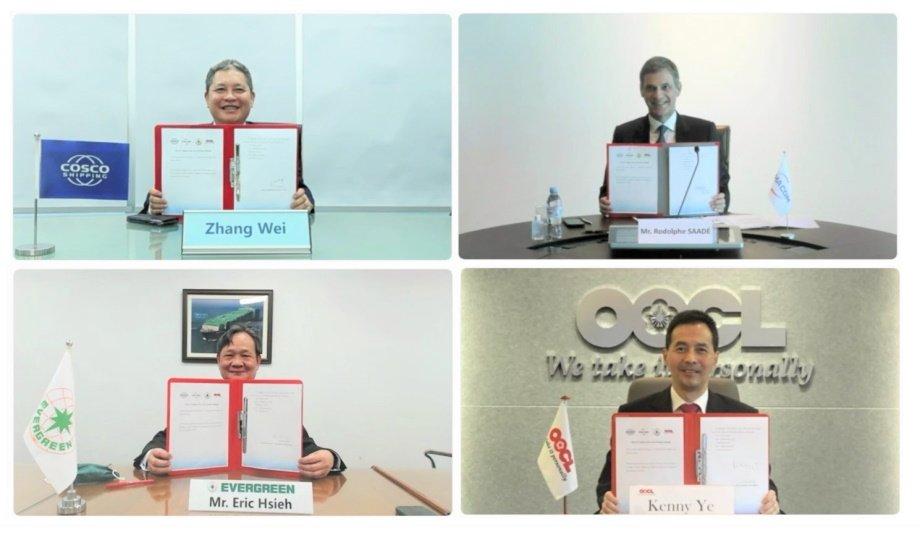With the signature of Ocean Alliance Day 7 Product, the CMA CGM Group continues to support its customers’ business, by expanding its range of services to serve more ports, with direct calls and improved transit times starting from January 2023.
The Group’s customers will reap the benefit of an optimised, highly competitive offering built on:
- 353 containerships, of which 125 will be operated by the CMA CGM Group, which continues to play a leading role within the alliance;
- 40 services; and
- An estimated total annual capacity of around 22.4 million TEUs (Twenty-foot Equivalent Units).
CMA CGM continues to support its customers’ business
The upgrade highlights CMA CGM’s commitment to serve its customers even more effectively, with:
- A comprehensive offering for Trans-Pacific trade with 21 services;
- An enhanced offering between Asia and Europe with 7 services;
- An important offering between Asia and the Mediterranean with 4 services;
- A game-changing offering with 2 Trans-Atlantic services connecting northern Europe with the east coast of the United States and with the Gulf of Mexico; and
- The only alliance offering 4 dedicated services between Asia and the Middle East and 2 Asia-Red Sea services.
Launched in spring 2017, Ocean Alliance is the world’s largest operational alliance between shipping companies on the world’s major trade routes.
CMA CGM operates 26 dual-fuel ships under Ocean Alliance
As part of its commitment to the shipping industry’s energy transition, the CMA CGM Group already operates 26 dual-fuel, liquefied natural gas-powered ships, under the aegis of Ocean Alliance. The CMA CGM Group’s entire e-methane ready fleet will expand to 77 ships by year-end 2026.
Since 2017, CMA CGM has chosen to invest in dual-fuel vessels that run on liquefied natural gas (LNG) and allow to almost fully reduce atmospheric pollutant emissions. This represents a first step in reducing greenhouse gas (GHG) emissions. The engine installed on these vessels is already capable of using Bio-LNG from bio-methane (-67% in CO2 emissions) or synthetic methane (including e-methane).
